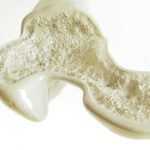Cha-Cha-Cha-Chia
By Bonnie Jenkins, Advanced Natural Wellness
When you think of chia seeds, visions of silly heads or animals probably come to mind. These kitschy gifts are so prevalent during the holidays that they’ve practically become a joke. And that’s a shame.
Chia seeds are one of the most misunderstood health foods around—but it’s one you should be eating every day. Chia has been around for centuries and the seeds have been a staple food source for the Native American people throughout history. Aztec warriors would eat chia during hunting trips, and the Native Americans of the Southwest would eat only chia seed mixed with water as they ran from the Colorado River to the Pacific Ocean to trade products.
Superfood Status
MD Exposes the Hidden Danger to Your Eyes

When your eyesight starts to fail, it's a real problem. Suddenly you can't go to the grocery store... you can't get to the doctor if you have an emergency... you can't meet your friends for dinner…
Your "regular" doctor doesn't have time to keep up with the latest research. And the same goes for eye doctors. They go to school to learn how to fit you for glasses and contacts, but have no way of preventing the damage and loss of eyesight that threatens your freedom and independence.
Let me show you something that explains a LOT about how your eyes work.
In my FREE Special Report, I'll show you a HUGE, untapped resource for your eyes that safely and naturally restores clear, effortless eyesight.
Click here to get started...
It’s little wonder that chia has now been given superfood status. Its nutritional profile is absolutely amazing, which means that chia seeds may be one of the best superfoods you can add to your everyday diet. For starters, the oil from the seeds naturally contains more than 60 percent omega-3 fatty acid. This is the higher than any other plant known to man. And, unlike flax seeds, chia seeds don’t have to be ground up before you eat them.
Chia seeds are also packed with protein—between 19 and 23 percent of the seed by weight is protein. This, too, is higher than most other seeds and grains, even quinoia. Combining the good fats with an excellent source of protein make this a dieter’s dream. Add to that the fact that one tablespoon of chia seeds provide one-fifth of your daily fiber needs and you can imagine the weight loss potential of this tiny seed.
Chia Seeds Help Balance Blood Sugar
High in vitamins C and E, these multi-talented seeds can also absorb up to 30 times its weight in water. This ability can prolong hydration (think of it as having a time-released source of water) and retain the electrolytes in body fluids, especially during exertion or exercise. The gel that chia forms can also slow digestion and help balance blood sugar levels. When the seeds are mixed with water or stomach juices, a gel forms that creates a physical barrier between the carbohydrates and the digestive enzymes that break them down. The carbohydrates are digested eventually, but at a slow and uniform rate. There is no insulin surge or spike needed to lower the blood sugar level after eating chia. This means you will have more balanced blood sugar levels, fewer energy drops and less craving for refined foods. These actions aren’t just good for dieters. Because chia seeds can balance blood sugar, they are perfect for diabetics and people with either hyper- or hypoglycemia.
The World's Quickest Solution for Ending Prostate and Urinary Misery
This has recently been revealed to be one of the only real breakthroughs in prostate health.
The seeds of a strange fruit (sometimes called "Chinese Apples") hold powerful phytonutrients that are a revolution in prostate health.
In fact, UCLA and Veterans Administration research have now proved this to be true.
Not only that, but it may be the worlds quickest solution for ending prostate misery.
Simply stated, these phytonutrients represent a huge step beyond beta sitosterol, saw palmetto, and other phytosterols alone.
Simply click HERE if you want to have fast prostate relief...restful, uninterrupted sleep...no more constant "urges to go"...enhanced virility...and optimal prostate support for life.
While these macro- and micro- nutrients all lend incredible health benefits to chia seeds, you may want to pay special attention if you are at risk of osteoporosis. Just two ounces of Chia seeds contain 600 mg. of calcium compared with 120 mg. for the same amount of milk, making it a perfect addition to a bone-building regime. Chia also contains boron—a critical mineral for bones.
Salvia Hispanica
But before you start grazing on your chia pet, you should know that the seeds on your “pet” are not necessarily the same seeds used as a super food. The chia seeds found in your health food store are from the plant Salvia hispanica—not always the type of seeds sprouting from your pet. But, don’t just look for chia seeds. Ask for organic seeds specifically grown for human consumption.
Add Chia Seeds to Everything
You can add chia seeds to just about everything. They have virtually no flavor, so they are a great addition to baked goods. Or sprinkle them on salads and vegetables. You can also use chia seeds to make a versatile gel by mixing one part seeds with nine parts water. You can then add the gel to jams, jellies, peanut butter, nut spreads, smoothies, hot or cold cereals, yogurts, mustard, catsup, tartar sauce or barbecue sauce. It makes a great fat substitute, promoting energy and endurance.
Chia seeds provide a great way to sneak extra nutrition into your daily routine, especially if you’re feeding kids or grandkids. Just remember to drink an ample amount of water as you would when consuming any fiber. Bon appetite!
References:
Chia Seeds Nutrition Data. USDA’s National Nutrient Database for Standard Reference. Available at www.nutritiondata.com.
Chicco AG, et al. Dietary chia seed (Salvia hispanica L.) rich in alpha-linolenic acid improves adiposity and normalises hypertriacylglycerolaemia and insulin resistance in dyslipaemic rats. British Journal of Nutrition. 2009;101:41-50.
Vuksan V, et al. Supplementation of conventional therapy with the novel grain Salba (Salvia hispanica L.) improves major and emerging cardiovascular risk factors in type 2 diabetes: results of a randomized controlled trial. Diabetes Care. 2007;30:2804-2810







